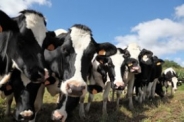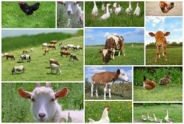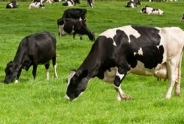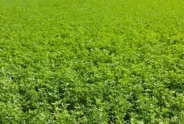Organic
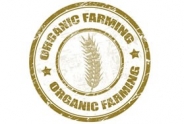 Organic production continues to grow in New York State. There are around 750 certified organic farms with over 68,900 acres. Of these farms, 286 are dairies. The Finger Lakes is a hub for organic crop production.
Organic production continues to grow in New York State. There are around 750 certified organic farms with over 68,900 acres. Of these farms, 286 are dairies. The Finger Lakes is a hub for organic crop production. ORGANIC CATEGORIES
Economics of Producing Industrial Hemp in NYS, 2019 Budgets
John Hanchar, Farm Business Management Specialist
Northwest New York Dairy, Livestock & Field Crops
Last Modified: January 17, 2019
Farm business owners can use 2019 budgets to make decisions regarding industrial hemp's place in their cropping systems.
Crop Alert
Mike Stanyard, Field Crops & IPM Specialist
Northwest New York Dairy, Livestock & Field Crops
Last Modified: July 27, 2018

Timely observations, information, and control strategies for managing pests, fertility, and current conditions on northwestern NY farms.
Know a Better Pasture
Nancy Glazier, Small Farms & Livestock Specialist
Northwest New York Dairy, Livestock & Field Crops
Last Modified: February 20, 2018

Pasture is a great way to feed your livestock during the growing season.
Transitioning from Conventional to Organic Production for the CSW Rotation
John Hanchar, Farm Business Management Specialist
Northwest New York Dairy, Livestock & Field Crops
Last Modified: January 10, 2018

Growers transitioning from conventional to organic production for the corn, soybean, wheat (CSW) cropping system can use an analysis of transition period economics to make decisions regarding an optimal crop sequencing.
Dealing with Frostbite on Newborn Lambs and Kids
Nancy Glazier, Small Farms & Livestock Specialist
Northwest New York Dairy, Livestock & Field Crops
Last Modified: January 2, 2018

Frostbite can be more serious than just ear damage in a cold winter.
Improved Meat Marketing for Small Scale Farms in the Northeast
Last Modified: October 6, 2017

Part 1. Understand the customer and their needs: Developing marketing strategy.
Labeling Guideline on Documentation Needed to Substantiate Animal Raising Claims
Nancy Glazier, Small Farms & Livestock Specialist
Northwest New York Dairy, Livestock & Field Crops
Last Modified: September 8, 2017

The Food Safety and Inspection Service (FSIS) is the Agency in USDA with the responsibility for ensuring that the labeling of meat and poultry products is truthful and not misleading.
Decoding the Label: Know Your Beef Choices
Last Modified: May 10, 2017

Check out the newly released fact sheet on types of beef production practices.
Managing Spring Grass Growth and Selective Grazing
Last Modified: May 4, 2017

For most beef cattle farmers who are managing their pastures in a rotational grazing system two of the biggest spring challenges are the flush of rapid growth that will occur and selective grazing. OSU Wayne Co. extension educator Rory Lewandowski reviews some basic plant growth biology and grazing principles that may suggest some management strategies. Click here for the full article.
Forage Congress - Presentations
Nancy Glazier, Small Farms & Livestock Specialist
Northwest New York Dairy, Livestock & Field Crops
Last Modified: March 14, 2017

New to the NWNY Team's lineup this winter was Forage Congress at the Genesee River Restaurant and Reception Center in Mount Morris, NY.
This event covered timely topics recommended by the region's producers. The morning's session began with an overview of the cropping plan from the ground up, economics of high fiber digestibility, and new alfalfa varieties with quality grasses. The afternoon covered double cropping with winter triticale and options for properly storing silages.
Integrated Pest Management Guide for Organic Dairies- Spanish & English
Libby Eiholzer, Bilingual Dairy
Northwest New York Dairy, Livestock & Field Crops
Last Modified: February 9, 2017

The Integrated Pest Management Guide for Organic Dairies is now available in English and Spanish from the New York State Integrated Pest Management Program. El Guía del Manejo Integrado de Plagas (MIP) Para los Ranchos Orgánicos ya es disponible en inglés y español del Programa de Manejo Integrado de Plagas del Estado de Nueva York.
English- http://hdl.handle.net/1813/42899
Español- http://hdl.handle.net/1813/46203
Fall Forages
Nancy Glazier, Small Farms & Livestock Specialist
Northwest New York Dairy, Livestock & Field Crops
Last Modified: September 8, 2016

Fall is coming, whether or not you have all your hay crops needed for the winter.
Multispecies pastures show productivity, drought tolerant promise
Last Modified: July 28, 2016

R. Howard Skinner a physiological plant ecologist and member of the USDA-ARS-Pasture Systems and Watershed Management Research Unit. He's been looking into how to increase the amount of forage (grasses and plants that animals eat) pastures can grow.
Click here for the rest of the story.
Fall Feeding Decision Tools
Nancy Glazier, Small Farms & Livestock Specialist
Northwest New York Dairy, Livestock & Field Crops
Last Modified: July 22, 2016

Many farms in the Lake Plains and Finger Lakes Regions in New York have diminished forage supply for the feeding season we are about to enter. Drought conditions have challenged our production systems in 2016. Here are some tools to help with decision making.
Custom Machinery Rates
Nancy Glazier, Small Farms & Livestock Specialist
Northwest New York Dairy, Livestock & Field Crops
Last Modified: June 1, 2016
Trying to figure out how much to pay or charge for custom machinery operations? Check out the 2016 custom rate summaries from Pennsylvania.
Entry Point Precision Ag Technology: Benefits & Costs for Decision Making
John Hanchar, Farm Business Management Specialist
Northwest New York Dairy, Livestock & Field Crops
Last Modified: March 15, 2016

Two benefits attributed to auto steer mentioned frequently by producers and their advisors are reduced stress and reduced fatigue. Combine these benefits with expected favorable economic and financial impacts, and auto steer has the potential to be a beneficial change in practice for farmers, one that farmers will likely want to evaluate for their business.
Prevent Avian Influenza at Your Farm
Last Modified: November 10, 2015

Animal and Plant Health Inspection Service has issued this fact sheet on biosecurity
Welcome to MeatSuite!
Nancy Glazier, Small Farms & Livestock Specialist
Northwest New York Dairy, Livestock & Field Crops
Last Modified: November 10, 2015

MeatSuite.com is a free online directory of regional livestock farms selling meat in bulk quantities.
Cornell Bull Test Sign-up is Underway
Nancy Glazier, Small Farms & Livestock Specialist
Northwest New York Dairy, Livestock & Field Crops
Last Modified: October 5, 2015

Cornell All Forage Fed Bull Test is looking for a few good bulls. This will be the fourth year of the stored feed test; a new addition is an optional 84-day pasture component.
Crop Cam
Mike Stanyard, Field Crops & IPM Specialist
Northwest New York Dairy, Livestock & Field Crops
Last Modified: September 9, 2015

Tune in as the NWNY Teams' Extension agronomists put on their GoPro cameras and head to the field.
Crop Cam 9-01-15 White Mold in Soybeans, Mike Stanyard in Ontario County.
Crop Cam 6-17-15 Scouting Soybean Aphids Mike Stanyard in Ontario County.
Crop Cam 6-05-15 Scouting Black Cutworm in Field Corn Mike Stanyard in Orleans County.
Crop Cam 5-29-15 Identifying Flowering Stage of Wheat Mike Stanyard in Monroe County.
Crop Cam 5-15-15 Alfalfa Weevil Larvae Scouting Mike Stanyard in Ontario County.
Crop Cam 5-14-15 Winter Triticale Forage Harvest Mike Stanyard in Wayne County.
Crop Cam 4-27-15:Comparing two winter malting barley fields. Bill Verbeten in Niagara County.
Crop Cam 4-6-15: Estimating wheat tiller counts per square yard. Mike Stanyard in Ontario County.
Crop Cam 3-20-15:Evaluating winter malting barley. Bill Verbeten in Niagara County.
Varying Corn & Soybean Populations, Varieties, & Down Force
Bill Verbeten, Field Crops
Northwest New York Dairy, Livestock & Field Crops
Last Modified: March 18, 2015

Considering varying your corn or soybean populations? Curious about multiple hybrid planters and planting two corn or soybean varieties in the same field? Maybe you're trying to decide between a planter with hydraulic or air bag down force pressure? If so check out this AgFocus Newsletter article from April of 2015.
Apply Now for New Farmer Profit Teams
Nancy Glazier, Small Farms & Livestock Specialist
Northwest New York Dairy, Livestock & Field Crops
Last Modified: March 16, 2015

Do you need some decision support to improve profitability of the farm business after 3-9 years of running it? Farmers at this stage are often faced with critical decisions that determine the long-term viability of their operation.
Proposed FAA Drone Rules Released
Bill Verbeten, Field Crops
Northwest New York Dairy, Livestock & Field Crops
Last Modified: February 24, 2015

On Sunday February 15th, 2015 the FAA released it's proposed rules for commercial unmanned aerial systems (UAS), commonly called drones, for public comment for 60 days. A summary can be found in the PDF below.
USDA Guide for Organic Crop Producers
Bill Verbeten, Field Crops
Northwest New York Dairy, Livestock & Field Crops
Last Modified: February 12, 2015

Thinking about transitioning some acres to organic production? Already an organic crop farmer and need to review some information? Check out the USDA Guide for Organic Crop Producers in the PDF below.
FAQs about Farm Drones
Bill Verbeten, Field Crops
Northwest New York Dairy, Livestock & Field Crops
Last Modified: December 22, 2014

Have a question about using an unmanned aerial system (UAS) on your farm? Not sure what is and isn't legal for drone use on your land? Check out this PDF for more information.
Gov. Cuomo Announces New Farmer Grant
Last Modified: November 5, 2014
The New York State New Farmers Grant Fund was created to provide assistance to new and early stage farmers and encourage farming as a career path to sustain and grow agribusiness across New York State.
Northern Stem Canker in Soybeans
Bill Verbeten, Field Crops
Northwest New York Dairy, Livestock & Field Crops
Last Modified: September 19, 2014

Heard about Northern Stem Canker? It's a new disease in New York that's been found in many soybean fields. Download this write-up by Gary Bergstrom and Jaime Cummings discussing Northern Stem Canker in Soybeans.
Delayed Planting Dates and Corn Maturity 2014
Bill Verbeten, Field Crops
Northwest New York Dairy, Livestock & Field Crops
Last Modified: August 21, 2014

Worried about the corn crop reaching maturity? Check out Bill Cox's article (see PDF) discussing why we can still be optimistic about a lot of the corn grain and silage acres.
Planting Winter Triticale, Malting Barley, Wheat, & Rye
Bill Verbeten, Field Crops
Northwest New York Dairy, Livestock & Field Crops
Last Modified: August 21, 2014

As corn silage, soybeans, and corn grain come off during September and October many winter small grains will be planted in northwestern NY. This article reviews the similarities and differences for current planting recommendations of winter triticale, malting barley, wheat, and rye.
Harvesting Small Grains
Bill Verbeten, Field Crops
Northwest New York Dairy, Livestock & Field Crops
Last Modified: July 9, 2014
As farmers in northwestern NY prepare to combine their wheat, barley, rye, triticale, oats, and other small grains in the coming weeks it is important to review the best management practices for harvest timing, reducing harvest losses, increasing dry down, and preventing fires. Download the PDF for the full July 2014 Ag Focus article on this topic.
USDA Grass Fed Program For Small and Very Small (SVS) Producers
Last Modified: May 22, 2014

The USDA is now offering lower-cost verification for 2-year certification.
Variable Rate Fertility Management
Bill Verbeten, Field Crops
Northwest New York Dairy, Livestock & Field Crops
Last Modified: April 24, 2014

An expanded version of the February 2014 Ag Focus Article, Variable Rate Fertility Management.
Adapt N Training Resources
Bill Verbeten, Field Crops
Northwest New York Dairy, Livestock & Field Crops
Last Modified: April 15, 2014

Interested in the Adapt N tool? Check out the videos, PDFs, and manual below.
Maximizing Forage Quality
Bill Verbeten, Field Crops
Northwest New York Dairy, Livestock & Field Crops
Last Modified: April 15, 2014

Trying to make high quality forage? This presentation discusses many factors that can be managed to increase the forage quality of hay, silage, and pasture.
Converting Hay Prices to Haylage Values
Bill Verbeten, Field Crops
Northwest New York Dairy, Livestock & Field Crops
Last Modified: March 28, 2014

When farmers are trying to give a dollar value to haylage they often use local hay prices on a dry matter basis and adjust for the dry matter (or moisture content) of the haylage. Download this PDF for more information and and example of how to calculate haylage values off of dry hay prices.
Evaluating Alfalfa for Winter Injury
Bill Verbeten, Field Crops
Northwest New York Dairy, Livestock & Field Crops
Last Modified: February 21, 2014

Have your soils been bare most of the winter and temperatures well below zero? If so you should be evaluating your alfalfa fields for winter injury early in March. Download this PDF for more information.
Evaluating Small Grains for Winter Injury
Bill Verbeten, Field Crops
Northwest New York Dairy, Livestock & Field Crops
Last Modified: February 21, 2014

Concerned about your winter wheat, barley, rye, spelt, or triticale crops being damaged by harsh winter conditions? Check out this PDF for more information about evaluating winter small grains for winter injury.
Cover Crop InterSeeder
Bill Verbeten, Field Crops
Northwest New York Dairy, Livestock & Field Crops
Last Modified: February 17, 2014

Want to plant a cover crop into standing corn or soybeans, apply a herbicide, and sidedress nitrogen all in one pass? Check out the cover crop InterSeeder developed at Penn State in this PDF. For additional information go to InterSeeder website.
PEDv: What does it mean for NY's Swine Producers?
Nancy Glazier, Small Farms & Livestock Specialist
Northwest New York Dairy, Livestock & Field Crops
Last Modified: February 17, 2014

Porcine Epidemic Diarrhea virus (PEDv) has arrived in New York with a vengeance.
Soil Sampling for Field Crops
Bill Verbeten, Field Crops
Northwest New York Dairy, Livestock & Field Crops
Last Modified: February 13, 2014

Not sure how to sample your soil? Download this Cornell Agronomy Fact Sheet. More Agronomy Fact Sheets are available at the Cornell Nutrient Management Spear Program website.
Alfalfa Management Guide
Bill Verbeten, Field Crops
Northwest New York Dairy, Livestock & Field Crops
Last Modified: February 7, 2014

Have a question about growing alfalfa? You will probably find the answer in "The Alfalfa Management Guide". This is a must have reference for anyone working with "the queen of forages".
Getting the Most Out of Your Manure Presentation
Bill Verbeten, Field Crops
Northwest New York Dairy, Livestock & Field Crops
Last Modified: January 23, 2014

There are many practical, cost-effective manure management practices can be adopted on farms of all sizes.
Abnormal Corn Ears Poster
Last Modified: January 21, 2014

“Check out this poster describing the cause of abnormal corn ears.”
Malting Barley Nutrient Management
Bill Verbeten, Field Crops
Northwest New York Dairy, Livestock & Field Crops
Last Modified: January 21, 2014

Would a National Checkoff fit Organic?
A. Fay Benson, Small Dairy Extension Educator
South Central New York Dairy & Field Crops
Last Modified: January 6, 2014
The New York Organic Dairy Task Force heard from two sides on this topic at its December 6th 2013 meeting at the Dairylea Offices in Syracuse. As an outcome of that meeting the 23-member Task Force decided that more education on the topic should be directed towards those that would be affected by a checkoff.
Apps for Ag
Nancy Glazier, Small Farms & Livestock Specialist
Northwest New York Dairy, Livestock & Field Crops
Last Modified: December 20, 2013
List of some apps for smartphone users.
Annual Farm Business Summary and Analysis Season Is Right Around The Corner
John Hanchar, Farm Business Management Specialist
Northwest New York Dairy, Livestock & Field Crops
Last Modified: December 2, 2013
- Sound financial planning and control are keys to successfully managing agricultural risks.
- The next few months present good opportunities to evaluate your business' financial management practices.
- The NWNY Dairy, Livestock, and Field Crops Program has the capacity to work with a variety producers as they seek to improve their business' financial management practices.
2013 Corn Silage Variety Trial
Bill Verbeten, Field Crops
Northwest New York Dairy, Livestock & Field Crops
Last Modified: November 4, 2013

Check out the latest Cornell Corn Silage Variety Trial results.
2014 NRCS EQIP Sign-up
Bill Verbeten, Field Crops
Northwest New York Dairy, Livestock & Field Crops
Last Modified: November 4, 2013

For more information about 2014 EQIP applications download these PDFs.
Gypsum Bedding in Long-Term Manure Storage May Create Dangerous Conditions
Nancy Glazier, Small Farms & Livestock Specialist
Northwest New York Dairy, Livestock & Field Crops
Last Modified: October 17, 2013
A serious and potentially hazardous situation can occur when farms using gypsum as bedding agitate their long term manure storages.
Vertical Tillage Equipment
Bill Verbeten, Field Crops
Northwest New York Dairy, Livestock & Field Crops
Last Modified: October 3, 2013

Vertical tillage tools have become very popular in recent years. For more information click on the links for the following companies: AerWay, Great Plains, John Deere, Case IH, Rangeline, McFarlane, & Landoll.
Shredlage Harvesting Recommendations
Bill Verbeten, Field Crops
Northwest New York Dairy, Livestock & Field Crops
Last Modified: September 10, 2013

For detailed recommendations on adjustments to Shredlage Harvesters download this PDF.
Which cows to cull?
Nancy Glazier, Small Farms & Livestock Specialist
Northwest New York Dairy, Livestock & Field Crops
Last Modified: September 3, 2013
Fall is the time to finalize your decision on which cows should be culled from the herd.
Beef Cattle Working Facility Components
Nancy Glazier, Small Farms & Livestock Specialist
Northwest New York Dairy, Livestock & Field Crops
Last Modified: August 30, 2013
This fact sheet from Dr. Mike Baker, Beef Cattle Extension Specialist, covers the minimum components needed for a handling system.
Dr. Temple Grandin's Web Page
Nancy Glazier, Small Farms & Livestock Specialist
Northwest New York Dairy, Livestock & Field Crops
Last Modified: August 30, 2013
Dr. Temple Grandin is one of the leading experts on livestock behavior and welfare. http://www.grandin.com/
Guide to Marketing Channel Selection
Joan Sinclair Petzen, Farm Business Management
Northwest New York Dairy, Livestock & Field Crops
Last Modified: August 30, 2013
Market channel selection is as important as production decisions for the small to medium sized fruit and vegetable operation. The new "Guide to Marketing Channels" is a decision-making aid for new farmers and for those considering marketing through a new channel. The guide focuses on the marketing of fresh-market produce, however many of the marketing principles apply other agricultural products such as cut flowers, meats, honey, maple syrup, and dairy products. While generalizations are made about the channels, exact details are subject to conditions with individual farms, their location, potential customer base size, and other factors.
How Do I Market My Meat Products?
Nancy Glazier, Small Farms & Livestock Specialist
Northwest New York Dairy, Livestock & Field Crops
Last Modified: August 30, 2013

The article provides some strategies to target your marketing efforts.
Integrated Pest Management Guide for Organic Dairies
Nancy Glazier, Small Farms & Livestock Specialist
Northwest New York Dairy, Livestock & Field Crops
Last Modified: August 30, 2013
NYS IPM publication to assist dairies and livestock producers with organic pest control options.
New York Organic Dairy Initiative
Nancy Glazier, Small Farms & Livestock Specialist
Northwest New York Dairy, Livestock & Field Crops
Last Modified: August 30, 2013
The Organic Dairy Initiative was created to provide research and extension to New York's Organic Dairy Industry.
Northeast Organic Dairy Producers Alliance
Nancy Glazier, Small Farms & Livestock Specialist
Northwest New York Dairy, Livestock & Field Crops
Last Modified: August 30, 2013
Find resources for transitioning to organic dairy production.
Organic and Alternative Livestock Production Systems
Nancy Glazier, Small Farms & Livestock Specialist
Northwest New York Dairy, Livestock & Field Crops
Last Modified: August 30, 2013
Need some additional resources for managing organic pastures, hay, and silage for your livestock?
Organic Dairy Certification: Why, How, and What?
Nancy Glazier, Small Farms & Livestock Specialist
Northwest New York Dairy, Livestock & Field Crops
Last Modified: August 30, 2013
Consumer demand for organic products continues to rise. This page provides an overview of the requirements of dairy and livestock certification.
Organic Livestock
Nancy Glazier, Small Farms & Livestock Specialist
Northwest New York Dairy, Livestock & Field Crops
Last Modified: August 30, 2013
Organic production is one option for livestock farms. Here's a link to the University of Florida's Small Farms & Alternative Enterprises website. http://smallfarms.ifas.ufl.edu/organic_production/organic_livestock.html
Resource Guide to Direct Marketing Livestock and Poultry
Nancy Glazier, Small Farms & Livestock Specialist
Northwest New York Dairy, Livestock & Field Crops
Last Modified: August 30, 2013
One of the most challenging parts of farming is the marketing piece. This guide provides useful information on getting started.
Using GDD to Predict Corn Silage Harvest
Bill Verbeten, Field Crops
Northwest New York Dairy, Livestock & Field Crops
Last Modified: August 29, 2013

The idea that corn silage is harvested at about 45 days after tassel is not very accurate most years in New York. See this PDF from Cornell Professor Bill Cox discussing how using growing degree days (GDD) and rainfall is a better approach to predicting corn silage harvest.
Corn Silage Pricing
Bill Verbeten, Field Crops
Northwest New York Dairy, Livestock & Field Crops
Last Modified: August 22, 2013
A number of tools are available to help farmers price their corn silage.
Check out the Cornell University factsheet
a calculator from the University of Wisconsin/ Extension Corn Silage Pricing Decision Aid (http://www.uwex.edu/ces/crops/uwforage/dec_soft.htm),
a calculator from Penn State University
and a calculator from the Purdue University
Considerations for Working with Immature Corn Silage
Bill Verbeten, Field Crops
Northwest New York Dairy, Livestock & Field Crops
Last Modified: August 20, 2013
In some parts of New York, the 2013 corn crop may not reach normal maturity. There may be small ears, poor grain fill or even no ears on the corn plant at the time of harvest. We have seen this same situation in previous years. The following points may be helpful as you work with immature corn that will be harvested for corn silage. Download the PDF for the full Dairy Nutrition Fact Sheet authored by Larry Chase.
FISA - A complete set of financial statements for agriculture
Joan Sinclair Petzen, Farm Business Management
Northwest New York Dairy, Livestock & Field Crops
Last Modified: July 1, 2013
This is an Excel 5.0 spreadsheet for calculating financial statements for agriculture. It includes a beginning of year (end of last year) balance sheet, end of year (end of this year) balance sheet, income statement, statement of owner equity, statement of cash flows and ratio analysis. The program is designed to allow single entry of data, it automatically does the transposition of data from one statement to the next and does nearly all the calculations. These statements are designed to be consistent with the recommendations of the Farm Financial Standards Council (FFSC). Thus, the statements include deferred taxes, base values for raised breeding livestock, the "sweet sixteen" financial ratios and the other characteristics embedded in the FFSC guidelines. The statements are intended for use with any type of farm business. Space is allowed for nonfarm assets and income because they are often important to lenders and others using the statements. However, the farm business part of the statement is separate from the non-farm section so that nonfarm assets can be ignored if desired. Each of the four basic financial statements is presented on one page with detailed information on supporting schedules. Thus, the summary financial performance and position of a business can be found on five sheets of paper (including two balance sheets).
Grazing at Grassland Dairy
John Hanchar, Farm Business Management Specialist
Northwest New York Dairy, Livestock & Field Crops
Last Modified: July 1, 2013

Grazing at Grassland Dairy discusses the decision making rational for a start-up dairy to choose the organic production model.
Northeast Organic Dairy Producers
Nancy Glazier, Small Farms & Livestock Specialist
Northwest New York Dairy, Livestock & Field Crops
Last Modified: June 27, 2013
Here is the link to NODPA's website.
Organic Certification Organizations
Nancy Glazier, Small Farms & Livestock Specialist
Northwest New York Dairy, Livestock & Field Crops
Last Modified: June 27, 2013
NY Dept. of Ag & Markets list of organic certifying agencies.
Getting to Organic
Bill Verbeten, Field Crops
Northwest New York Dairy, Livestock & Field Crops
Last Modified: June 14, 2013
Want to hear some real-life stories of farmers transitioning from conventional to organic? Download "Getting to Organic: Profiles of How Michigan Farmers Made Their Transition to Organic Agriculture".
Regional Organic Organizations
Bill Verbeten, Field Crops
Northwest New York Dairy, Livestock & Field Crops
Last Modified: June 14, 2013
Trying to network with other organic growers? Need help with the certification process? Maybe you're looking for upcoming events or more resources?
National Organic Program
Bill Verbeten, Field Crops
Northwest New York Dairy, Livestock & Field Crops
Last Modified: June 3, 2013
Need to get certified organic or curious about the process?
Webinar: Organic Dairy Forages: Focus on Summer Annuals
Bill Verbeten, Field Crops
Northwest New York Dairy, Livestock & Field Crops
Last Modified: June 3, 2013
Tired of dealing with the "summer slump" in your pastures? Check out this webinar that talks about forages that can "beat the heat" and increase your summer inventories.
Steel in the Field
Bill Verbeten, Field Crops
Northwest New York Dairy, Livestock & Field Crops
Last Modified: April 30, 2013
Sixty years ago everyone had some "steel in their fields" to control weeds. However mechanical weed control has become a lost art in modern farming. Whether you're concerned about chemical weed resistance, an organic grower, or are just plain interested in "digging" a little more into the topic, this publication is for you.
Upcoming Events
2026 Corn Congress
January 14, 2026
Henrietta, NY
Participant Registration for the 2026 Corn Congress NOW OPEN!
NOW OFFERING 1.5 DEC Recertification CREDITS
2026 Forage Congress
January 28, 2026
Nunda, NY
Register to attend 2026 Forage Congress!
2026 NWNY Dairy Day
February 5, 2026 : NWNY Dairy Day 2026
Perry, NY
Sponsorship and Registration OPEN!
The CCE NWNY Dairy, Livestock and Field Crops team will be holding it's 4th Annual "Dairy Day" on February 5, 2026! We will be bringing the latest in dairy research and hot topics to you with this in-person, 1-day conference.
Announcements
Follow us on Instagram
See photos and reels of our most recent events and programs!Join us on Facebook!
Follow us on Facebook to get up to date posts about events, workshops and everything NWNY!Add us on LinkedIn!
Connect with us on LinkedIn to get more information about upcoming workshops and programs!

